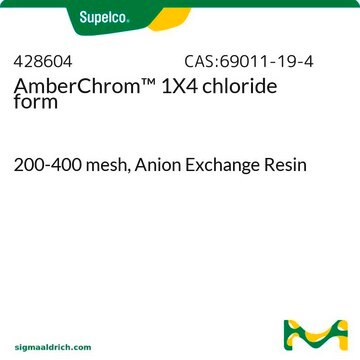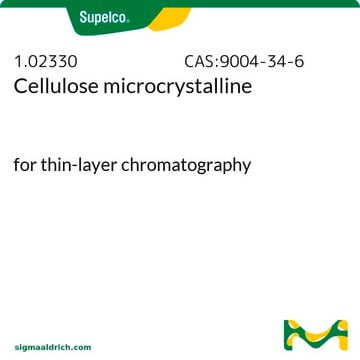22184
Cellulose Chromatography Resin
acid washed, powder, 60-700 mesh
Synonyme(s) :
Cellulose powder, Cotton linters
About This Item
Produits recommandés
Nom du produit
Cellulose, acid washed, powder, for column chromatography
Qualité
for column chromatography
acid washed
Niveau de qualité
Forme
powder
Technique(s)
LPLC: suitable
L des fibres
0.02-0.25 mm
Matrice
Cellulose
Groupe de la matrice active
polymer
Taille des particules
20-250 μm
Traces de cations
Cu: ≤10 mg/kg
Fe: ≤20 mg/kg
Adéquation
suitable for column chromatography
Technique de séparation
size exclusion (SEC)
Chaîne SMILES
O1[C@H](C(C(C(C1CO)O)O)O)O[C@@H]2C(OC(C(C2O)O)O)CO
InChI
1S/C12H22O11/c13-1-3-5(15)6(16)9(19)12(22-3)23-10-4(2-14)21-11(20)8(18)7(10)17/h3-20H,1-2H2/t3?,4?,5?,6?,7?,8?,9?,10-,11?,12+/m1/s1
Clé InChI
GUBGYTABKSRVRQ-WFVLMXAXSA-N
Vous recherchez des produits similaires ? Visite Guide de comparaison des produits
Catégories apparentées
Description générale
Application
Code de la classe de stockage
11 - Combustible Solids
Classe de danger pour l'eau (WGK)
WGK 1
Point d'éclair (°F)
Not applicable
Point d'éclair (°C)
Not applicable
Équipement de protection individuelle
Eyeshields, Gloves, type N95 (US)
Faites votre choix parmi les versions les plus récentes :
Déjà en possession de ce produit ?
Retrouvez la documentation relative aux produits que vous avez récemment achetés dans la Bibliothèque de documents.
Les clients ont également consulté
Notre équipe de scientifiques dispose d'une expérience dans tous les secteurs de la recherche, notamment en sciences de la vie, science des matériaux, synthèse chimique, chromatographie, analyse et dans de nombreux autres domaines..
Contacter notre Service technique




